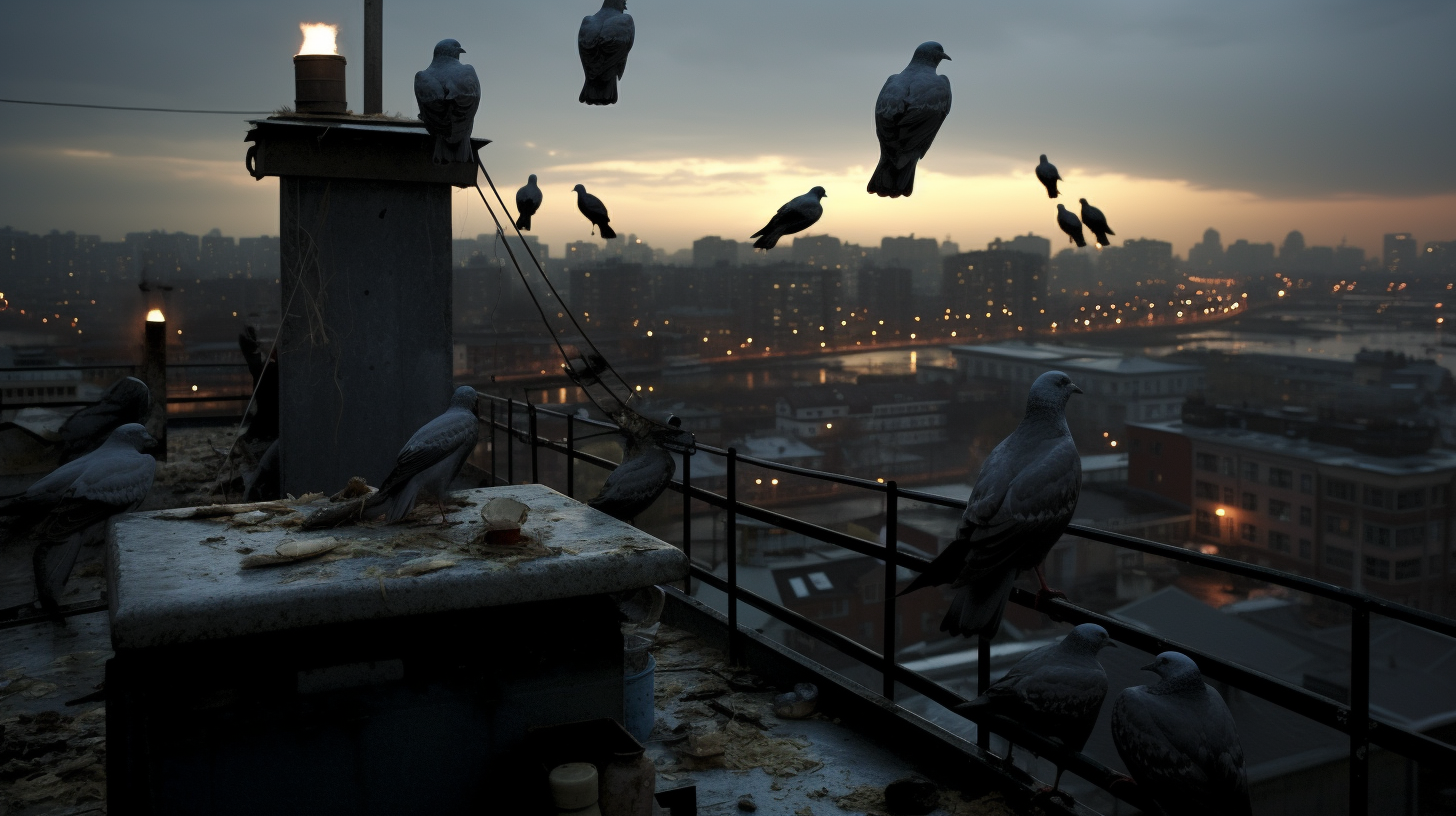In the shadow of our once gleaming metropolises, where the earth has donned a mantle of grey, resilient forms of life claw out a tenuous existence. One such saga of survival is that of the pigeons, those hardy avian dwellers, who now proclaim dominion over the rusted battlements of our skyscraping failures. Welcome to ‘Rooftop Refuge – The Pigeons’ Tale of Survival’, an exploration into the life of these winged survivors in our bleak environmental landscape.
The pigeon, once a bothersome feature of urban life, has evolved into a curious emblem of enduring life amidst desolation. This feathery ordeal begins at dawn, as the sun reluctantly peers through the heavy veil of smog left by our negligence, casting a coppery light over hordes of pigeons that have made their sanctuaries among the rooftops and the remains of structures too stubborn to succumb to decay.
The birds’ stories are diverse, and their survival reflects a microcosm of adaptation and ingenuity that rivals our own human attempts at persisting in this withering age. Unlike the people chronicled in our previous piece ‘Scavengers of the Fog’, the pigeons do not possess masks or technology; their tools are instinct and evolution. Their bodies have grown more robust, feathers thicker, to shield against the toxic rains. Their scavenging has become an art — dodging drones and picking clean the carcasses of our world’s leviathans.
One might wonder, how does this avian adaptation echo that of humanity’s desperate scrambles for survival? In tales shared by rooftop gardeners — those few who attempt to harvest amidst the havoc — pigeons appear little short of legends. One gardener, Maria, spoke of their perseverance: ‘They come and watch us, with eyes that have seen the world change. And in a way, they guide us — where the pigeons flourish, we find hope for growth amidst the blight.’
But not all see the pigeons as allies in survival. Debates rage in the remnants of digital forums, with some branding them as thieves, competitors for the scraps we increasingly rely on. Yet others advocate for a symbiotic co-existence, mirroring a yet-to-be-lost kinship with the natural world. This discourse is palpable on the streets below, where the lines between nature and humanity blur irreversibly day by day.
Through scientific lenses, the transformations of these creatures may seem a bleak testament to the world we’ve shaped. Researchers, operating from makeshift labs in less contaminated zones, have noted the rapid pace of the pigeons’ genetical shifts. Dr. Eliza Nguyen, an avian behaviorist, remarks with a somber tone: ‘It’s a clear signal of distress from the ecosystem. Yet, these birds are becoming the repository of what it means to persist, to thrive against all odds.’
As dusk draws its curtain, pigeons flock in mesmerizing patterns against the twilight, eerily reminiscent of the city lights now extinguished. The cooing that oscillates over the haunting silence of our cities might be nature’s requiem — or a glimmer of its undefeated heart.
To witness the story of pigeons is to witness more than the tale of a species adapting—it is to glimpse a parallel of our own potential trajectory. Maybe amongst the pigeons, we can find lessons, a metaphor for our resilience — or a cautionary example of what life becomes when left with no other choice but to endure on rooftops, in an eternal refuge.
